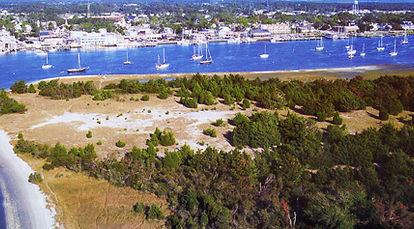
About The Coastal Plains
North Carolina’s Coastal Plains experience a lot of precipitation, evaporation and warm temperatures year round because of the mix of geographical features such as wetlands, marsh and the beach shores. During January the average temperatures are around 40 degrees fahrenheit while during August the average temperatures are around 90 degrees fahrenheit.
The Coastal Plains have important geographic features such as low sloping land, wetlands, swamps, sandhills and the outer bank barrier islands. These characteristics allow for an ocean breeze and the Gulf Stream to increase precipitation by ocean evaporation and condensation with the help of winds and wetlands and swamps holding water for an extended amount of time.
Learn More About the Plains: Biogeochemical Cycles
Nitrogen Cycle
Discover how nitrogen cycles through the ecosystems of the NC Coastal Plains.

Phosphorus Cycle
Study the path phosphorous takes around the ecosystems of the NC Coastal Plains.
Hydrological Cycle
Get informed about how water makes its away around the NC Coastal Plains.
Carbon Cycle
Be informed on how carbon travels through the ecosystems of the NC Coastal Plains.

The dominant vegetation communities in the Coastal Plains are pine and hardwood forests, salt tolerant plants and a variety of grasses. Hardwood swamp forests are made up of oak, elm, birch, sycamore and ash trees while Swamp forest usually contain a mix of cypress trees. NC coastal marshes are home to cattail, needlerush, bulrush, cordgrass and saw grass. The dunes of North Carolina are populated by beach pea, croton, dune elder, perennial grasses and primrose.

Sulfur Cycle
Learn how sulfur moves through the NC Coastal Plains.
 |  |
|---|---|
 |  |
 |  |
 |  |
 |
